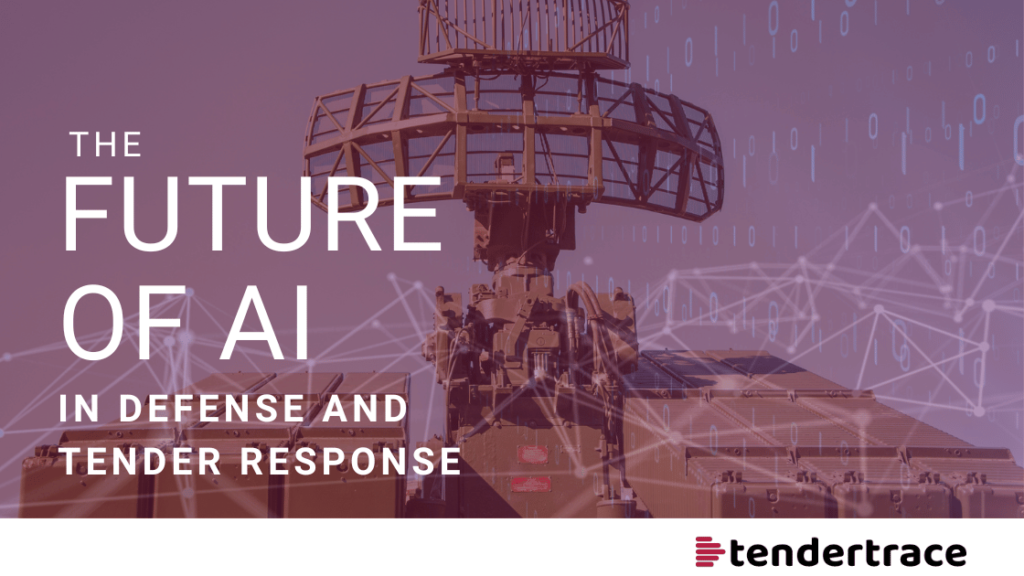By Abu Odigie, CEO & Co-Founder, Tendertrace
Tendertrace is grateful to have had the opportunity to be part of the discussion panel at the AutogenAI Executive Exchange luncheon event, which was also live-streamed on the Australian Defense Magazine (ADM) YouTube channel.
In this article, Tendertrace has distilled some of the key points from the discussion, where Abu Odigie, CEO, Tendertrace and his other panel members delved into the future of AI in defense and other critical areas.
The panel featured:
- Ewen Levick, Publisher at ADM Group
- Sean Williams, CEO of AutogenAI
- Rob Sutton, Managing Director of Mirragin Consulting
At the AutogenAI Executive Exchange in Canberra, Tendertrace revealed data for future opportunities in FY25 with defence and government contracts totalling $45.2B. Contracts that are set to expire in the coming year.
With single awards as high as $4.6B, Tendertrace’s customers want to know if they can get access to these opportunities.
Abu Odigie, CEO & Co-founder of Tendertrace stated: “The data represents dynamic movement and engagement in the defence marketplace”
Access to AI tools like Tendertrace is critical for companies managing run rates, budgets, and operational spending. It gives important insights that helps vendors to understand the market and howthe economy is moving.
FY23-24 saw $38.6 billion awarded in contracts and even though the data isn’t fully collected for 2024, it’s clear that there was a big start to the year.
Abu noted: “This important information demonstrates the value of defence in our marketplace and the enormous opportunity that is there for us”
Despite the rapid advancement of AI and LLMs, the government sector is slow to adopt even with services like the Army and Navy pushing hard. Bureaucracy hampers modernisation efforts and change is slow, even though AI provides a huge advantage in military applications. Satellite imagery can be read, 1000s of reports can be interpreted and understood with AI processing, and the technology can be deployed and used in any environment.
‘AI is front and center from a war fighting perspective’ according to Rob Sutton, Managing Director of Mirragin Consulting
With adoption rates lagging, tech giants and LLMs are outpacing the government sector. Similar to the recent space of privatisation, AI adoption in defence is just another example of technology that began in the civilian sector before feeding back into government agencies.
Ewan Levick summed it up beautifully, ‘Change is coming, and it’s coming externally to defense’
For companies submitting bids, the ability to measure competitors and have a clear view of the wider landscape provides a clear advantage, some that has allowed smaller companies to enter the arena. Tendertrace’s Market Intelligence AI platform levels the playing field and addresses the challenge of SMEs not engaging when it comes to defence contract bidding.
ADMs Publisher, Ewan Levick understands the issues SMEs face, noting that “Defence will ask for general purpose figures, and release requirements months before taking bids”
AI reduces the time needed to put together bids and review documents for defence procurement. Time constraints are reduced dramatically as large language models can interpret, sort, and instantly retrieve information contained in:
- Policy notes
- ITTs
- Supplier Background Information
‘Computers being able to read and write is transformative – Sean Williams, CEO Autogen AI.
Aside from versatile projections and writing capabilities, AI and LLMs speed up processing and outputs for defence contracts, reducing time to procurement and putting less strain on the taxpayer. For companies that need to react quickly, AI tools like Tendertrace supplies the needed data and lowers the cost of competition.
As processes are streamlined and faster procurement is enabled, AI tools are reducing the cost of engagement, and increasing the number of SMEs competing for government contracts. In real terms, defence needs to access the capabilities of agile SMEs who can move quickly, and AI is helping them to achieve just that.
Visit Australian Defense Magazine the full podcast here.





